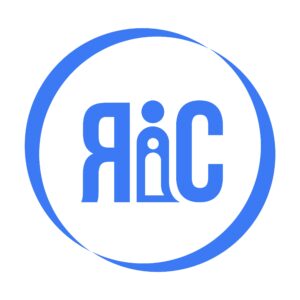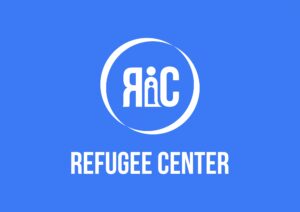Refugees in Canada 2024

Refugees in Canada: An Overview in 2024
Introduction
Canada has a long-standing tradition of welcoming refugees, making it one of the most prominent refugee-receiving countries in the world. As of 2024, Canada's refugee policies and systems continue to evolve in response to global crises, domestic needs, and international obligations. The country’s refugee system operates through humanitarian efforts, cooperation with international agencies like the United Nations High Commissioner for Refugees (UNHCR), and collaboration with private sponsors. This report provides a comprehensive overview of Canada’s refugee policy in 2024, highlighting its history, current policies, challenges, and opportunities for refugees resettling in the country.
1. Historical Context of Canada's Refugee System: Refugees in Canada 2024
Canada’s approach to refugees has been shaped by a history of international migration and humanitarian commitments. After World War II, Canada began to systematically admit displaced persons, integrating them into Canadian society. This led to the creation of the Immigration Act of 1952, which established the framework for the modern refugee system.
The 1976 Immigration Act, a milestone in Canada’s history, distinguished refugees as a separate class of immigrants, codifying the government’s commitment to humanitarian resettlement. Canada became one of the first countries to introduce private sponsorship of refugees, a system that allows Canadian citizens and organizations to sponsor refugees and support them through their integration process.
In 1986, Canada received the Nansen Medal from the UNHCR for its outstanding contributions to the cause of refugees. Over the decades, Canada has provided refuge to people fleeing persecution, violence, and conflict from regions such as Vietnam, Syria, Afghanistan, and now Ukraine and parts of Africa.
2. Current Refugees Programs in 2024
Canada’s refugee system in 2024 is primarily organized under three main categories: Government-Assisted Refugees (GARs), Privately Sponsored Refugees (PSRs), and Refugee Claimants (asylum seekers). Each category plays a critical role in ensuring Canada meets its humanitarian obligations.
a. Government-Assisted Refugees (GARs)
GARs are refugees who have been identified and referred to Canada for resettlement by the UNHCR or other designated referral organizations. These individuals typically come from refugee camps or other places of temporary refuge, often living under precarious conditions. In 2024, the Canadian government continues to play an active role in funding and coordinating the resettlement of GARs.
Upon arrival in Canada, GARs receive financial support through the Resettlement Assistance Program (RAP) for their initial needs, such as housing, clothing, and food. RAP typically provides this assistance for one year, while refugees are introduced to essential services, language training, and employment resources to aid their integration.
b. Privately Sponsored Refugees (PSRs): Refugees in Canada 2024
Canada's private sponsorship program remains one of the most distinctive elements of its refugee policy. Through this program, private citizens, community organizations, or groups of at least five individuals can sponsor refugees. Sponsors commit to supporting the refugee financially and emotionally for at least one year.
In 2024, private sponsorship remains highly active, especially in response to global refugee crises such as the displacement caused by conflict in Ukraine, Syria, and African nations like Sudan and Eritrea. The program offers a flexible, community-driven approach to refugee resettlement, creating strong ties between sponsors and refugees and fostering a supportive network of integration.
c. Refugee Claimants (Asylum Seekers): Refugees in Canada 2024
Refugee claimants are individuals who arrive in Canada and request asylum at a port of entry or within the country. These individuals typically claim they cannot return to their home countries due to fears of persecution based on race, religion, nationality, membership in a particular social group, or political opinion.
Asylum seekers must go through a legal process that involves making a claim to the Immigration and Refugee Board (IRB), which assesses whether their fear of persecution is credible. In 2024, Canada has faced increased numbers of refugee claimants, particularly from regions experiencing political unrest and human rights violations. The country has maintained a fair but rigorous process for handling these claims, ensuring that individuals with legitimate protection needs receive asylum.

3. Challenges Facing the Refugee System in 2024
Canada’s refugee system in 2024, while robust, faces several challenges that require ongoing attention and policy adjustments. These challenges include capacity limitations, bureaucratic delays, integration barriers, and managing global refugee crises.
a. Capacity and Processing Delays: Refugees in Canada 2024
One of the persistent challenges is the backlog in processing refugee applications, particularly for refugee claimants and privately sponsored refugees. As refugee numbers continue to rise globally due to wars, environmental disasters, and political instability, Canada’s immigration system has faced significant pressures. Although the government has taken steps to address these delays by hiring more staff and improving processing times, backlogs remain a concern for refugees awaiting decisions on their claims or resettlement.
b. Housing and Resettlement Support
Finding affordable housing for refugees, particularly in Canada’s major cities like Toronto, Vancouver, and Montreal, has become increasingly difficult. The housing shortage and rising rent prices create obstacles for new arrivals, particularly for larger refugee families. While the government and private sponsors work to secure adequate accommodations, there is a growing need for more affordable housing solutions, especially in urban areas where job opportunities are concentrated.
c. Integration and Employment Challenges
Another challenge is the integration of refugees into the Canadian labor market. Although refugees are often eager to find work and contribute to their new communities, they may face barriers such as language proficiency, recognition of foreign qualifications, and unfamiliarity with the Canadian job market. In 2024, there is a renewed emphasis on supporting refugees with tailored language programs, job training, and mentorship to improve their employment prospects.
The mental health of refugees also presents a challenge. Many refugees arrive in Canada after experiencing trauma, such as violence, loss of family members, or long periods of displacement. Access to mental health services and culturally sensitive support remains crucial to help refugees heal and adjust to life in a new country.
4. Opportunities for Refugees in Canada
Despite these challenges, Canada continues to offer numerous opportunities for refugees to thrive. Its welcoming environment, multicultural ethos, and support services make it an attractive destination for individuals seeking safety and a fresh start.
a. Education and Language Training: Refugees in Canada 2024
Canada is committed to providing refugees with access to education and language training, which are essential for successful integration. Refugees, particularly children, have the right to attend public schools, where they receive education in both English and French, depending on the region. For adults, language training is available through government-funded programs like Language Instruction for Newcomers to Canada (LINC). In 2024, these programs have been expanded to accommodate the growing number of refugees, with a focus on tailored language support to meet diverse needs.
b. Economic Contributions and Employment Programs
Many refugees bring valuable skills, experience, and resilience, which contribute positively to Canada's economy. In 2024, the Canadian government continues to enhance programs that help refugees transition into the labor market. Refugees can benefit from skills recognition programs, job placement initiatives, and entrepreneurial support services that enable them to start businesses and become self-sufficient.
Furthermore, as Canada grapples with labor shortages in key sectors such as healthcare, technology, and construction, refugees represent a potential solution to filling these gaps. Government and private sector initiatives are being developed to bridge the gap between refugees’ skills and the demands of the labor market.
c. Community Support and Social Inclusion
One of the strengths of Canada’s refugee system is its community-based approach to integration. Private sponsors, volunteer organizations, and local communities play a vital role in welcoming refugees, providing them with support networks, and helping them adjust to their new lives.
In 2024, community-driven initiatives like settlement organizations, faith-based groups, and advocacy networks continue to foster social inclusion. These initiatives help refugees build relationships, navigate cultural differences, and access essential services such as healthcare, legal assistance, and social support.

5. The Impact of Global Crises on Canada’s Refugee System in 2024
As the world faces a growing number of crises, Canada’s refugee policy must remain responsive to emerging challenges. In 2024, several global crises continue to influence Canada’s refugee intake:
- Conflict in Ukraine: Following Russia's invasion of Ukraine, Canada has seen a significant influx of Ukrainian refugees. In response, Canada introduced expedited processing for Ukrainian nationals, allowing them to apply for temporary residency or permanent resettlement. This response demonstrates Canada's ability to adapt its refugee policy to specific crises.
- Displacement in Africa and the Middle East: Conflicts in countries like Syria, Afghanistan, Sudan, and Ethiopia have contributed to a rising number of refugees seeking protection in Canada. These crises have underscored the importance of international cooperation, with Canada continuing to work closely with the UNHCR and other partners to identify and resettle the most vulnerable individuals.
- Climate-Induced Displacement: As climate change increasingly leads to displacement, particularly in vulnerable regions such as Southeast Asia, the Caribbean, and sub-Saharan Africa, Canada is exploring new frameworks to address climate refugees. In 2024, discussions continue around how Canada can best prepare for and support those displaced by environmental disasters.
Conclusion
Canada’s approach to refugees in 2024 remains a cornerstone of its international humanitarian commitments and reflects its multicultural and inclusive values. Despite challenges such as processing delays, housing shortages, and integration barriers, the country continues to provide a safe haven for those fleeing persecution and conflict. Through a combination of government assistance, private sponsorship, and community-based support, refugees in Canada are given the opportunity to rebuild their lives, contribute to society, and thrive.
Looking forward, Canada’s refugee policy will need to remain flexible and adaptive in response to global crises, demographic shifts, and emerging challenges such as climate displacement. With its strong history of humanitarianism and a vibrant network of support systems, Canada will likely continue to be a leader in refugee resettlement on the global stage in 2024 and beyond.
In case, if you need legal assistance in order to claim refugee status in Canada in 2024, please fill in application below or contact us directly.

